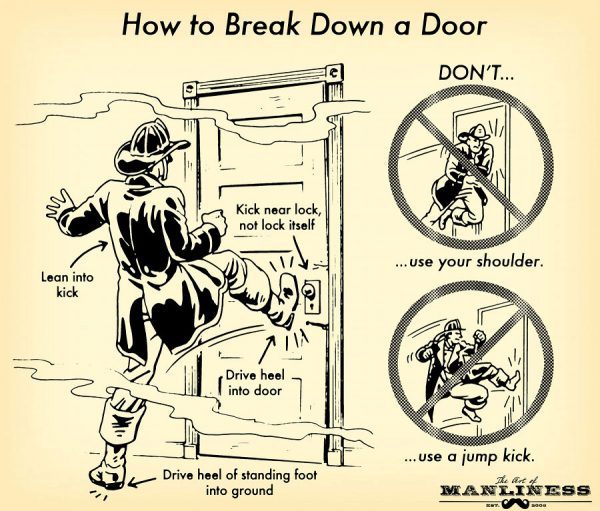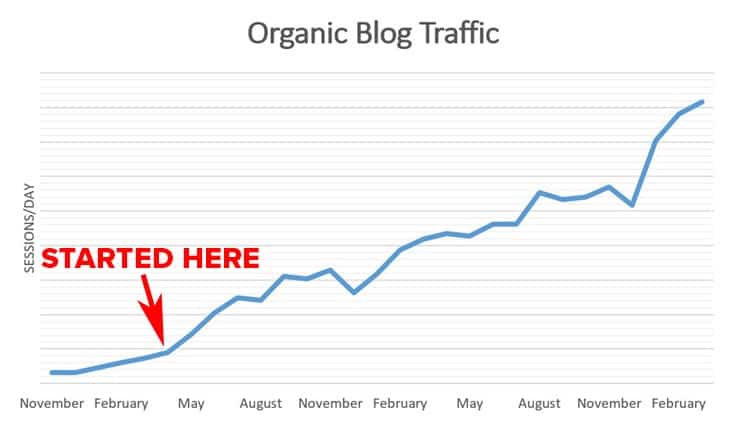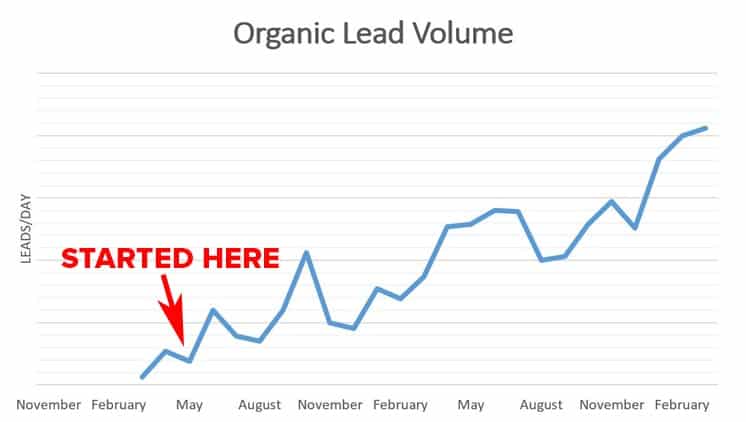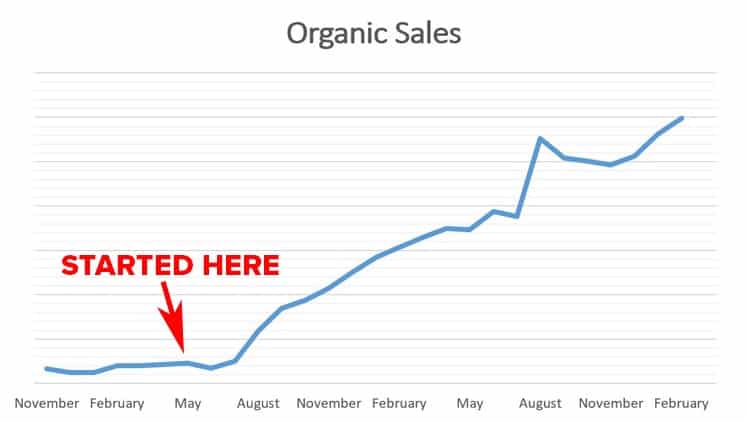3 Marketing Approaches That Will Get You Results
by Aden Andrus • July 15, 2019
In the world of online marketing, you get a lot of different advice. Everyone seems to have a new marketing hack or breakthrough that they want to share.
Unfortunately, most of those hacks are about as effective as the latest fad diet. They might produce quick results, but those results—if they occur—are shortlived and you quickly find yourself right back where you started.
So what gives? There are always case studies to back up these hacks, so why don’t they work for your business?
Why Most Marketing Approaches Don’t Work
If there’s anything I’ve learned from the years I’ve spent in marketing, it’s that any marketing advice should come with a disclaimer: Your results may vary. Even between direct competitors, there can be so much variance in targeting and execution that the same marketing tactic can produce very different results for each business.
Or, to put it simply, just because a certain strategy worked for someone else, that doesn’t mean it will work for you. You have to discover what works for your business and that will be different from what worked for another business in some agency or marketer’s case study. Sure, reading case studies can be a great way to come up with new ideas, but remember, your results may vary.
3 Marketing Approaches You Can Count On
Now, all that being said, there are a few consistent, universal marketing approaches that do apply to any business. However, unlike most marketing hacks, these truths aren’t related to some specific tactic and I can’t make any promises about what sort of results they deliver.
What I can promise, however, is that they will deliver.
When you get right down to it, there are three basic ways to win at online marketing: 1) be first, 2) be interesting and 3) be consistent. If you can get even one of these right, you can get great results from your marketing every time. Get two or three of them right and the results are truly magical.
1. Be First
Of the three options we’ll be discussing in this article, this is easily the most popular. With online marketing, there’s always something new to try. Maybe’s it’s Google newest ad format. Maybe it’s the latest growth hack. Maybe it’s just a crazy marketing idea you came up with on the fly.
Regardless of where it came from, new ideas, tools or strategies almost always work best for early adopters.
If you think about it, this just makes sense. People pay attention to new things—whether that’s the current fashion, latest car design or a new social media platform. If you can get in early, you can take advantage of all that attention and use it to make a name for your business.
The Challenges of Being First
Unfortunately, while jumping on board with a new marketing tactic or channel can produce great results, there are a few challenges to this approach.
First of all, you have to adopt early. That means you have to dive in feetfirst into an unproven potential marketing channel. If you wait to see if it will deliver good results, you’ll probably miss your window of opportunity.
Second, because you have to commit early on to an untested platform or strategy, you risk wasting a lot of time and energy on the wrong things. Remember Vine? The social media platform where people posted short, often silly videos?

A lot of people put a lot of work into building a big following on Vine…only to lose it all when the platform closed down. As frustrating as that is, that’s the risk you take when you focus your marketing strategy around being first.
Third, while being first can give you an advantage for a time, if the tactic or platform works out long-term, your competitors will slowly start to steal market share from you. Yes, you can retain some long-term advantage by being first, but once everyone is doing what you’re doing, it can be hard to stay ahead of the competition.
Finally, in order to truly make the most of being first, you can’t just be first. You also have to be interesting and/or consistent. Being first can help you build an audience quickly, but if you don’t give people a good reason to keep paying attention to you, they’ll drift away from you.
On the whole, while most marketers love the idea of being first, many struggle to actually implement this strategy properly. Given the unpredictability and other challenges of being first, it’s often far easier to focus on being interesting or consistent than try to crack the code on being first.
2. Be Interesting
While it might sound silly to base a marketing approach around “being interesting”, the fact of the matter is, most marketing is boring. If you can find ways to be engaging, people will be much more interested in your business.
This tactic works for all sorts of businesses. YouTube stars make entire careers out of saying things in entertaining or compelling ways. Most of the time, what they’re actually relating is widely available information, but the way they relay earns them thousands-to-millions of fans and views.
Similarly, a blog like “The Art of Manliness” provides interesting information in an engaging way.

Offer that same information in a textbook and no one will remember it, but present it in a fun way and people will happily like and share it.
As a more direct business marketing example, most people find the subject of pooping uncomfortable, but use a unicorn puppet to make the topic approachable and suddenly your product is an international phenomenon.
Now, creating interesting marketing content requires additional time and effort, which is why so few companies do it. But, by making your marketing interesting, you make your business something that people actually want to engage with. It doesn’t have to be incredibly involved or complex, it just has to be interesting to your target audience.
A Quick Example
To illustrate this point, when I started helping Disruptive Advertising with their content marketing, I knew I was tackling a crowded space. There were dozens-to-hundreds of blog posts on every digital marketing topic imaginable—how was I supposed to make Disruptive’s content stand out?
To answer that question, I took an in-depth look at the existing content and discovered something interesting: almost all of the content felt exactly the same. With the exception of a handful of sites, everyone was saying the same things in the same ways. To make matters worse, everything was so generic and flavorless that it was hard to keep the different sites straight.
So, if we wanted people to pay attention to our content, we needed to do things differently. I’ve always believed that people respond best when you create real value for them, so I dove in and started creating value, real value that would make people sit up, pay attention and say, “I need more of that sort of information”.
Almost overnight, things began to improve.

As you might imagine, our content marketing efforts produced more than just organic results, but you “earn” organic traffic through the quality of your content, so it’s a great indicator of how interesting your content actually is.
And it wasn’t just traffic that improved. Far more importantly, our organic lead volume shot through the roof.

After just two years, Disruptive increased organic lead volume by over 32x. However, any good blog editor knows that more organic “leads” is not the same thing as more organic sales.
Here’s how that lead volume translated into sales:

See that funny little dip right before August? It turns out that creating interesting, valuable content comes with a lag period. It takes a while before your best leads start to pour in.
To our surprise, about a year after we changed our approach, we began to get a ton of incredibly high-intent organic leads who were saying things like:
- “What really drew me to you guys was your content–the really valuable stuff you are always sharing…that’s how I knew you guys know your stuff.”
- “I was really impressed with your overall approach to AdWords. I’ve read a few of your articles and it seems like you guys really know what you’re doing. I was like, I have to reach out to these guys and see what they can do for me.”
By August, we were getting so many high-quality leads that we had rein things in to avoid overloading our account managers. It took a few months to gear up, but eventually we were ready to open the floodgates again. Now, years later, our content drives over 20x more new revenue every month than it did when I started…simply because we figured out how to create interesting, compelling content for our audience.
3. Be Consistent
Finally, if there’s one thing I’ve learned over the years, it’s that consistency pays off in marketing. More than almost anything else, consistently marketing your business in an effective way will yield great results.
Sadly, as marketers, we’re easily distracted by the latest new idea or hack.

This is understandable. I mean, we’re under a lot of pressure. And, when you read case studies where someone made a simple tweak to their campaigns and doubled their revenue, it’s easy to give up on a channel that isn’t yielding results in the hopes of making it big.
But here’s the thing, there’s almost always a backstory to all of those case studies. All you’re seeing is the final product, not the months or years of research, practice and training that led to that sudden success.
For example, it might take over a million man-hours to write, shoot and produce a blockbuster film. How long does it take to watch? 2-3 hours. If the director got a few weeks into filming and then got excited about a new, easier project, we’d never have anything worth watching reach the silver screen.
What makes a movie worth watching? Consistent effort by hundreds of people for months or even years.
What makes marketing successful? Consistent effort over days, weeks, months and even years.
The biggest secret to effective online marketing is consistency. As long as you’re investing in a marketing channel that’s right for your business, you’ll usually get a lot more value from sticking things out than you will from switching over to a new, unknown channel.
Case in Point
To show you how all of this works in practice, here’s a quick case study. I’ll warn you, it’s not like most of the case studies you read. For this particular client, it took 2 years to get the results we’re about to discuss. But, because we were consistent over time, we ended up with mind-blowing, long-term results that changed the client’s business.
When we first started working with this client, their account was performing decently well. It was nothing to write home about, but it wasn’t losing money hand over fist the way either.
Since this was a B2B company with a large lifetime value, we were able to test quite a few different tactics in their account without putting their profit margin at serious risk.
So, for the next 10 months, we tried all sorts of different advertising strategies. We experimented with various keywords and remarketing strategies and tested a whole alphabet soup of Google Ads options (e.g., GDN, GSPs and RLSA).
After exploring all of our options, we had increased click volume by 500% and lead volume by 240%:

Not bad, eh? Overall, our grab-bag of tactics was delivering good value for the client.
A Winning Combination
At a certain point, however, we had tried just about everything that it made sense to try. To make matters worse, every time we tried to push the envelope with something new, we ended up wasting money.
Clearly, we needed to change our focus.
So, we switched from exploration mode to refinement mode. We dug into the client’s analytics data and discovered that not all of the clicks we were driving were created equal. For example, paid search clicks from certain keywords were producing lots of leads. In contrast, clicks on our Display Network ads rarely converted.
Using this data, we started to make changes to the account. We cut our Display Network budget and eliminated other campaigns that weren’t producing profitable sales.

It took about four months, but we eliminated 20% of our clicks without really reducing lead volume. More importantly, this reduced our cost per lead by 13%.
Now, after a little over a year, the client was getting 3x the leads at 90% of their original cost per lead. As with our exploration phase, this improvement wasn’t the result of any particular major change—it was the sum of countless micro-improvements to the account.
Refining Things
Eventually, however, we hit another plateau. We knew which channels and campaigns were driving the best clicks, and those clicks were converting at a pretty good rate.
However, a high-converting campaign isn’t always the same thing as a highly profitable campaign.
To really get the most out of the account, we dug into the client’s sales data. As it turned out, we were bidding on a lot of keywords that were driving conversions… but few to no sales.
In this situation, we realized that we were facing a couple of potential problems: 1) we were bidding on the wrong keywords, or 2) our ads and landing pages weren’t a good fit for our keywords.
So, we started aggressively testing our ad copy and landing pages. After a few tests, if the keyword still wasn’t producing sales at a decent rate, we got rid of it. And, as it turned out, that was the case for 89% of the keywords.
At first glance, you would think that eliminating 89% of your keywords would kill lead volume; however, that didn’t prove to be the case. Instead, because we were able to redirect ad spend from our poorly performing keywords to our best keywords, lead volume only dropped by 10%. Lead quality went through the roof.

Altogether, this meant that we ended up spending 43% less on Google Ads while producing more sales. Not too shabby!
Micro-Wins…for the Win
After two years, we had tripled lead volume, dramatically improved close rates and cut overall ad spend. It was a huge win for the client, but it wasn’t the result of any particular tweak or hack. Instead, it was the end result of thousands of micro-wins.

When you get right down to it, this is how most marketers achieve true success. Yes, most people tend to make a big deal out of the big wins, but headline-worthy hacks are the exception, not the norm.
Instead, it typically works best to follow the model we used with this client. Start by exploring your options. You might waste money on a few false starts, but you’ll learn what really works for your business.
After you’ve figured out which options deliver clicks and conversions, take a harder look at your campaigns. Identify which channels deliver profitable conversions and which ones simply make a lot of smoke and noise. Then, once you’ve narrowed your ad spend down to your most effective options, take a look at your sales data. Find the specific campaign elements that produce sales, and focus your spend on those elements.
It isn’t a get-rich-quick scheme, but this methodical approach delivers consistent micro-wins that add up to big wins over time. And ultimately, isn’t that what matters most?
3 Marketing Approaches That Work
When you get right down to it, people generally pay attention to your marketing for one of three reasons: 1) they have no other options (because you’re an early adopter), 2) they find you interesting or 3) your consistent effort has made you their best option.
Ideally, your marketing will meet more than one of these criteria, but even if you only satisfy one, you can still get decent-to-great results.
The trick here is to focus on an overall marketing approach instead of hopping between marketing tactics in the hope that something will work out. Putting your energy into a defined, directed approach is almost always a better choice than trying out the latest hack.
By the way, if you’d like help fleshing out your own marketing using one of the approaches mentioned in this article, let us know here or in the comments. We’d love to help!
What sort of marketing approaches do you recommend? Do you agree with the categories and suggestions in this article? Leave your thoughts in the comments below.





